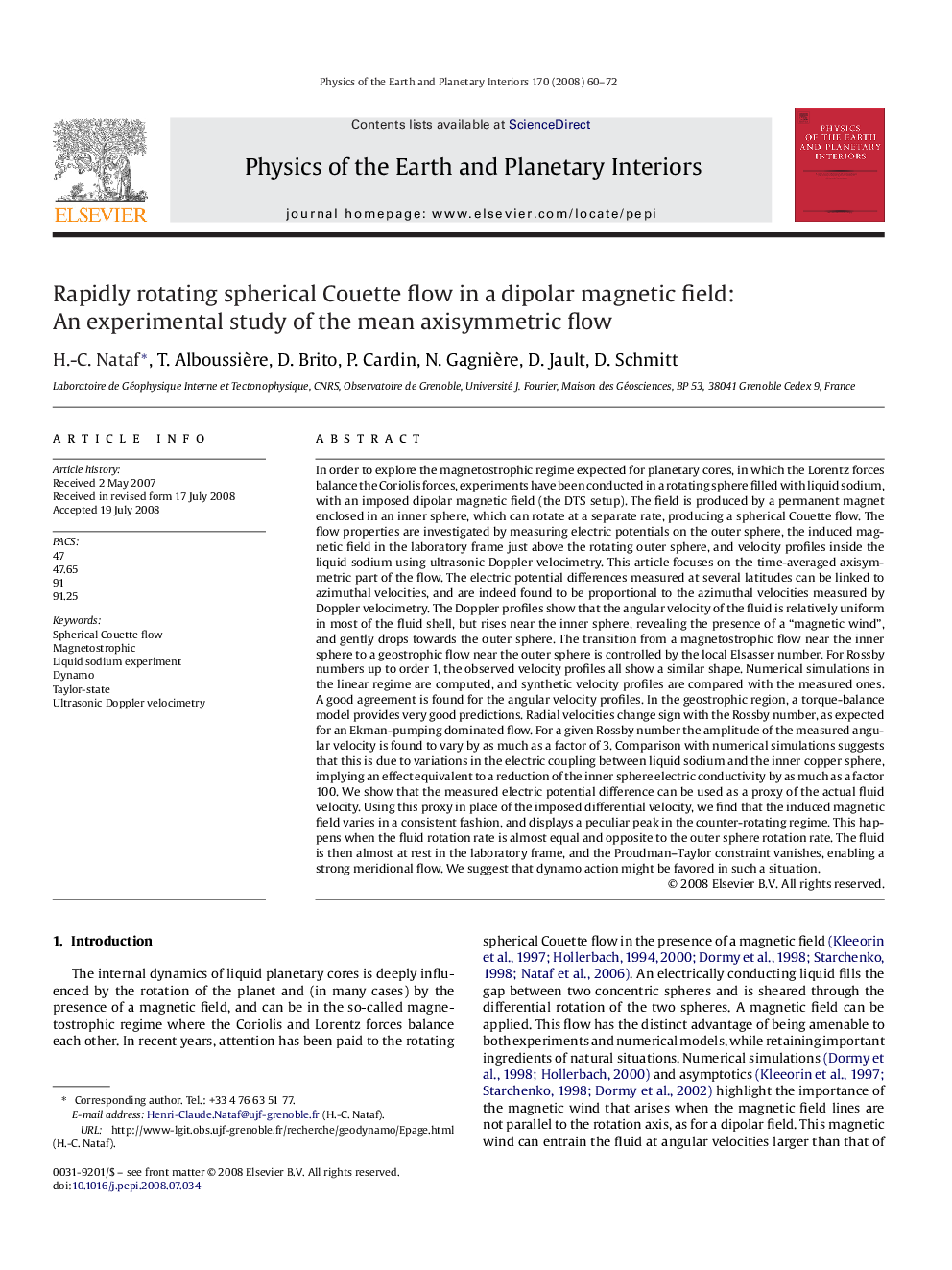| کد مقاله | کد نشریه | سال انتشار | مقاله انگلیسی | نسخه تمام متن |
|---|---|---|---|---|
| 4742412 | 1641577 | 2008 | 13 صفحه PDF | دانلود رایگان |

In order to explore the magnetostrophic regime expected for planetary cores, in which the Lorentz forces balance the Coriolis forces, experiments have been conducted in a rotating sphere filled with liquid sodium, with an imposed dipolar magnetic field (the DTS setup). The field is produced by a permanent magnet enclosed in an inner sphere, which can rotate at a separate rate, producing a spherical Couette flow. The flow properties are investigated by measuring electric potentials on the outer sphere, the induced magnetic field in the laboratory frame just above the rotating outer sphere, and velocity profiles inside the liquid sodium using ultrasonic Doppler velocimetry. This article focuses on the time-averaged axisymmetric part of the flow. The electric potential differences measured at several latitudes can be linked to azimuthal velocities, and are indeed found to be proportional to the azimuthal velocities measured by Doppler velocimetry. The Doppler profiles show that the angular velocity of the fluid is relatively uniform in most of the fluid shell, but rises near the inner sphere, revealing the presence of a “magnetic wind”, and gently drops towards the outer sphere. The transition from a magnetostrophic flow near the inner sphere to a geostrophic flow near the outer sphere is controlled by the local Elsasser number. For Rossby numbers up to order 1, the observed velocity profiles all show a similar shape. Numerical simulations in the linear regime are computed, and synthetic velocity profiles are compared with the measured ones. A good agreement is found for the angular velocity profiles. In the geostrophic region, a torque-balance model provides very good predictions. Radial velocities change sign with the Rossby number, as expected for an Ekman-pumping dominated flow. For a given Rossby number the amplitude of the measured angular velocity is found to vary by as much as a factor of 3. Comparison with numerical simulations suggests that this is due to variations in the electric coupling between liquid sodium and the inner copper sphere, implying an effect equivalent to a reduction of the inner sphere electric conductivity by as much as a factor 100. We show that the measured electric potential difference can be used as a proxy of the actual fluid velocity. Using this proxy in place of the imposed differential velocity, we find that the induced magnetic field varies in a consistent fashion, and displays a peculiar peak in the counter-rotating regime. This happens when the fluid rotation rate is almost equal and opposite to the outer sphere rotation rate. The fluid is then almost at rest in the laboratory frame, and the Proudman–Taylor constraint vanishes, enabling a strong meridional flow. We suggest that dynamo action might be favored in such a situation.
Journal: Physics of the Earth and Planetary Interiors - Volume 170, Issues 1–2, September 2008, Pages 60–72